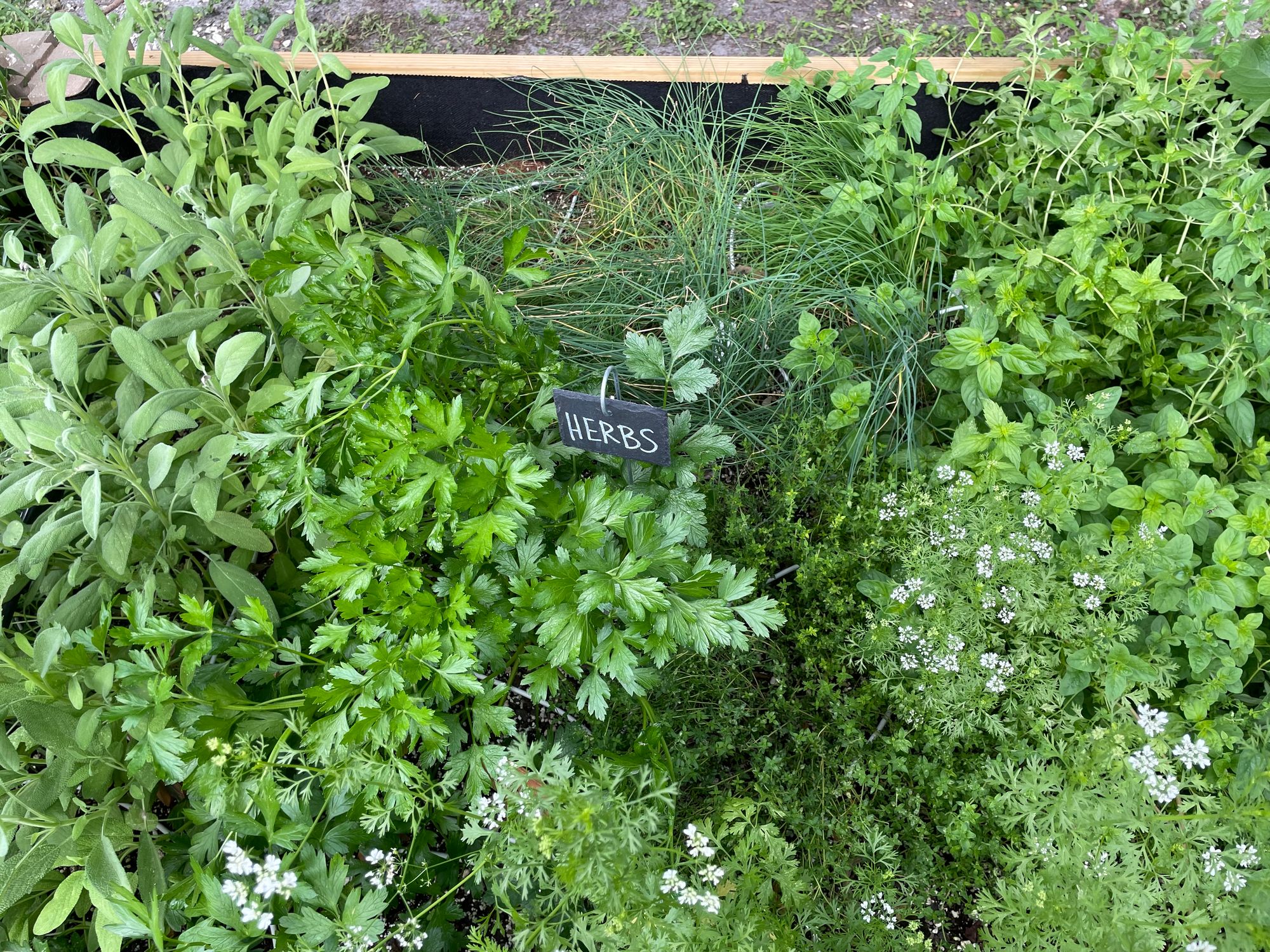Cooking with Herbs (Part 1)

If you’re finding that your recipes need a makeover or want more variety in your meals, try cooking with herbs! Herbs are a great way to add flavor and color to food or drinks, whether sweet or savory, without adding fat, salt, or sugar. They also have unique health benefits. For example, rosemary and oregano have antioxidant properties.
Herbs are the leaves of a plant. They can be used fresh or dried. Any other part of the plant, which is usually dried, is referred to as a spice. These include: bark (cinnamon), berries (peppercorns), seeds (cumin), roots (turmeric), flowers (chamomile), buds (cloves), and stigmas of flowers (saffron).
Here’s how to get started incorporating herbs into your recipes.
Cleaning Herbs
It’s important to clean fresh herbs to remove any dirt, debris, or pesticide residue. To clean fresh herbs, dunk them in a cold-water bath and gently move them around in the water. Shake off the excess water and carefully pat the herbs dry with paper towels. Delicate herbs like parsley, cilantro, and chervil should be handled more gently than sturdy herbs like rosemary and thyme.
Storing Herbs
It’s ideal to cook with herbs that are fresh. To make your herbs last a long time and not become limp or discolored before use, it’s important to consider how you store them. Fresh herbs can be stored via two methods: in a plastic bag or in a jar filled with water. Leafy herbs can be stored upright in a jar of water, with the leaves sticking out of the top of the jar. All herbs can also be stored wrapped in a damp paper towel inside an airtight plastic bag in the refrigerator.
The flavor of dried herbs fades with time. They should be stored in a cool, dark, dry cabinet or pantry for 3 - 6 months, and in the fridge or freezer for up to 1 year. The herbs should be in an airtight container and clearly labeled.
Using Herbs in Cooking
Cooking with herbs is exciting! It adds so much flavor and is visually appealing. There are a variety of ways to incorporate herbs in cooking, whether fresh or dry.
Some fresh herbs are hardier than others (like rosemary and parsley) and will retain their flavor during the cooking process. These types of herbs can be added at the start of your cooking. Some herbs are used only to flavor a dish but are not eaten — whole bay leaves, for example, are added at the beginning and then discarded after cooking.
You can add fresh herbs closer to the end of the cooking period to preserve their flavor. For example, when making a curry and adding cilantro, you will taste more of the flavor when you add the cilantro right before serving. Herbs can also be added as a garnish, which is another great way of enhancing the flavor, aroma, and visual appeal of your dish. For example, try spaghetti Bolognese with fresh basil leaves on top or a pumpkin dish topped with sage.
Dried herbs are more strongly flavored than fresh. As a general rule, one teaspoon of dried herbs equals 3 teaspoons of fresh. Dried whole herbs, where the leaves are still attached to their stalk, tend to have a stronger flavor than loose leaves sold in packets or jars. Dried herbs are usually added closer to the beginning or the middle of the process, as they are more potent.
If you regularly use herbs, you might like to create a ‘bouquet garni’ by tying chopped and mixed fresh herbs in muslin bags – these can be added to your cooking for flavor and removed before serving.
Experimenting With Herbs
Besides boosting the flavors, aromas, appearance, and textures in your meals, the more herbs you try, the more fun it is to cook. Here are some fun ways to try new herbs:
• Follow a recipe that calls for one or two herbs you haven’t used before.
• Experiment with using other herbs in place of those called for in a recipe to see how the dish changes.
• Make your own bouquet using herbs of your choice.
• Grow some herbs in pots on your windowsill or in your garden for use in your cooking.
• Visit a market from a different culture, for example an Asian grocery market, to try experimenting with new flavors like lemongrass or Thai basil.
In part 2, we’ll talk about the most common herbs found in the supermarket. I’ll review their health benefits and suggest ideas for cooking.
Prathima Kannan, MPH, RDN, LDN.
